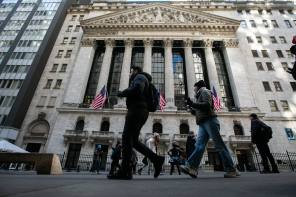
Article 1 / 3
Absolute Return Funds - June 2013Can faltering funds make a comeback?
While some of the criticism levelled against the absolute return sector has been overblown, the are certainly has not met expectations.
Rather than delivering a consistent, inflation-beating return, a number of funds have persistently lost money. Which are they and are they likely to turn performance around?
David Hambidge, head of multi-asset at Premier Portfolio managers, says of the sector: “There was a fantastic opportunity that has been missed, given the chaos that was created by the collapse of Lehman [Brothers]. That threw up opportunities in all asset classes and the sector as a whole should have done better. It has done OK, although if you take out the outliers, such as the Odey UK Absolute Return fund, the returns look pretty pedestrian.”
Tim Cockerill, head of research at Rowan Dartington, says managers who use an absolute return strategy have a greater chance of getting it wrong, so there is likely to be fewer managers who perform well in the long term.
“Investment process and strategy is also important to understand. A fund may pursue an equity long/short strategy but there are plenty of ways to play this,” he claims. “Another factor is that most are theoretically low risk but low risk strategies can be the hardest to manage. If performance slips, then recovering lost ground and achieving the fund’s aim is hard because risk budgets are unlikely to allow enough risk-taking to regain lost ground.”
Whatever the difficulties of evaluating the different approaches in the sector, delivering a negative return in three years would be considered a failure for an absolute return fund. Out of 52 funds, 10 have lost money in that period. The three worst offenders are the BlackRock UK Absolute Alpha fund, the Polar Capital UK Absolute Return fund and the GLG Emerging Markets Diversified Alternative fund.
Of these, by far the worst performing is the BlackRock fund. A former poster boy for the sector, the product was once a billion pound fund but is now just £370.6m in size. No one is entirely sure what went wrong for former manager Mark Lyttleton, but size may have been a factor.
Once one of BlackRock’s brightest stars, he left the firm in March. It has been left to his co-manager Nick Osborne and the newly appointed Nigel Ridge to pick up the pieces. Performance in the very short term (one month) appears to have stabilised, but it is too early to tell whether the fund will regain its former glory.
Mr Hambidge believes that long/short market-neutral funds such as BlackRock’s will generally find it difficult to make money in the long run
For most of the weaker funds, their problems came in 2011 – five lost more than 10 per cent in that year alone: L&G European Absolute, GLG Alpha Select Alternative, CF Absolute Return Cautious Multi Asset, Polar Capital UK Absolute Return and GLG Emerging Markets Diversified Alternative. The worst performers have left the sector. For example, the managers of the SVM UK Absolute Alpha fund announced in November 2012 the fund was to close with just £2m in assets. It had dropped around 30 per cent in its three-year run.
Mr Hambidge concludes there is more manager risk within the sector. “The theory is sound, but investors don’t really know when the returns will kick in, so you have to take it on face. The Standard Life Gars fund has done a fantastic job for investors, but its best returns were in 2008/09 when it was a little smaller. Returns are still OK, but it is difficult to know whether those returns will be delivered in a bull or bear market.”
But investors are not only looking to absolute return funds for performance, but using them as a diversifier. And here, again, some have been more successful than others. Mr Hambidge adds: “A number of the funds have acted like low beta equity funds. They have shown quite a high correlation with risk assets, such as equity. In 2011, for example, the markets fell and a number of absolute return funds also fell. They are not doing what you want.”
The rump of the sector, however, has not performed disastrously, but has just been lacklustre. Returns have been, as Mr Hambidge suggests, “pedestrian”. The greatest cost has been an opportunity cost. This is particularly true of many of the absolute return bond funds, but these may start to come into their own if the interest rate cycle starts to turn.
However, for absolute return funds, the manager is crucial. Many of the sector’s weakest managers have been in the wrong place through a number of different market cycles and it is difficult to see any real reason for a turnaround in performance.
Cherry Reynard is a freelance journalist



